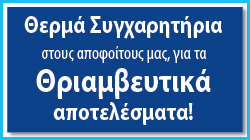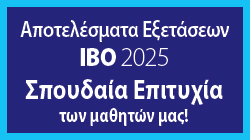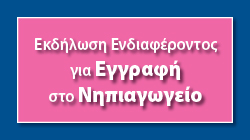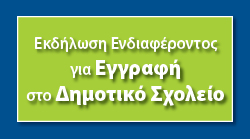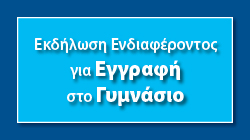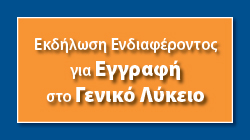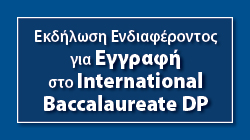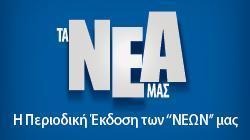Group 1: Language A: Language and Literature
• Modern Greek A: Language and Literature HL/SL
• English A: Language and Literature HL/SL
Description of the Course
Language A: Language and Literature is directed towards developing and understanding the constructed nature of meanings generated by language and the function of context in this process. This course is designed for students who have experience of using the language in an academic context, and supports future academic study in the subject by developing a high social, aesthetic and cultural literacy, as well as effective communication skills.
Course Structure
Part 1: Language in Cultural Context. Language and its cultural context looks at the audience and purpose of texts and how language changes and how meanings are shaped by culture and context, and involves the study of topics such as language and power, language and belief, language and taboo, language and gender, language history and translation.
Part 2: Language and Mass Communication. Language and mass communication looks at different forms of mass communication and how these use language to inform, persuade or entertain, and involves the study of topics such as the media institutions, political and legal language, popular culture, and advertising
Part 3: Literature - Texts and Contexts (HL 3 texts, SL 2 texts). Texts and contexts examine meaning in a text as shaped by culture: that is, by the contexts of the circumstances of its production, by what the reader brings to it, and by social context, cultural heritage and historical change.
Part 4: Literature - Critical Study (HL 3 texts & SL 2 texts) or the close reading of texts.
Language A: Language and Literature Assessment
The assessment model for Language A: Language and Literature is the same at Higher Level (HL) and Standard Level (SL), but there are significant quantitative and qualitative differences between the levels. For example, HL students study six literary texts, SL students study four; HL students produce four written tasks of up to 1,000 words during the course, SL students three; and the questions in the essay assessment paper (Paper 2) are the same for both levels, but with different assessment criteria applied.
Assessment is based on the following assignments:
Completion of TWO (HL) or ONE (SL) Written Assignment (s)
Completion of two oral assessments (1 Individual Oral and 1 Further Oral)
Two external examination papers (PAPER 1, PAPER 2)
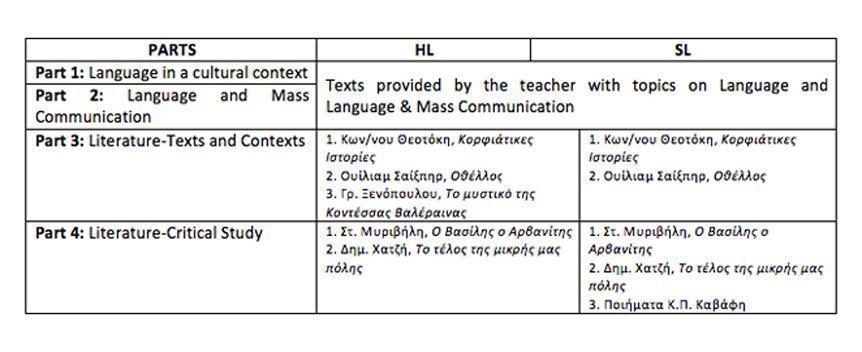
Language A: Literature
The course is built on the assumption that literature is concerned with our conceptions, interpretations and experiences of the world. The study of literature can therefore be seen as an exploration of the way it represents the complex pursuits, anxieties, joys and fears to which human beings are exposed in the daily business of living.
It enables an exploration of one of the more enduring fields of human creativity, and provides opportunities for encouraging independent, original, critical and clear thinking. It also promotes respect for the imagination and a perceptive approach to the understanding and interpretation of literary works.
Through the study of a wide range of literature, the language A: literature course encourages students to appreciate the artistry of literature and to develop an ability to reflect critically on their reading. Works are studied in their literary and cultural contexts, through close study of individual texts and passages, and by considering a range of critical approaches. In view of the international nature of the IB and its commitment to intercultural understanding, the language A: literature course does not limit the study of works to the products of one culture or the cultures covered by any one language. The study of works in translation is especially important in introducing students, through literature, to other cultural perspectives. The response to the study of literature is through oral and written communication, thus enabling students to develop and refine their command of language.
Language A: literature is a flexible course that allows teachers to choose works from prescribed lists of authors and to construct a course that suits the particular needs and interests of their students. It is divided into four parts, each with a particular focus.
Part 1: Works in translation
Part 2: Detailed study
Part 3: Literary genres
Part 4: Options (in which works are freely chosen)
Language A: literature aims
The aims of the language A: literature course are to:
1. introduce students to a range of texts from different periods, styles and genres
2. develop in students the ability to engage in close, detailed analysis of individual texts and make
3. relevant connections
4. develop the students’ powers of expression, both in oral and written communication
5. encourage students to recognize the importance of the contexts in which texts are written and
6. received
7. encourage, through the study of texts, an appreciation of the different perspectives of people from other cultures, and how these perspectives construct meaning
8. encourage students to appreciate the formal, stylistic and aesthetic qualities of texts
9. promote in students an enjoyment of, and lifelong interest in, language and literature.
10. develop in students an understanding of the techniques involved in literary criticism
11. develop the students’ ability to form independent literary judgments and to support those ideas.




